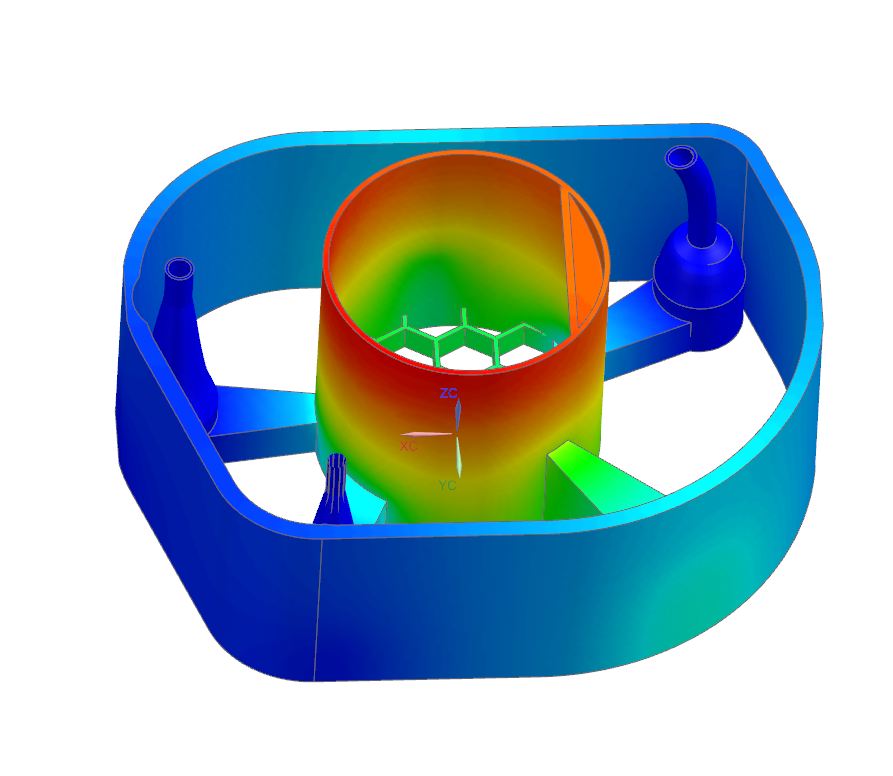Thermal optimization of a 3D-printed microdistillation apparatus using FEM methods
- chair:
-
place:
Bachelor's / Master' Thesis / Student Assistant / Internship
-
institute:
IMVT
-
starting date:
Immediately
- Kontaktperson:
Background and motivation
The dramatic effects of climate change are becoming increasingly apparent. In order to limit the consequences, anthropogenic CO2 emissions must be dramatically reduced. One major source is the transport sector, which currently consumes half of the world's oil production. Liquid fuels with their high energy density will continue to be very difficult to replace by e-mobility or hydrogen in certain sectors (e. g. heavy-load vehicle and air traffic) in the future. The so-called power-to-fuel processes are one way of making these sectors CO2-neutral. One promising process is the conversion of hydrogen and carbon monoxide from renewable sources into long-chain hydrocarbons using Fischer-Tropsch synthesis. However, the raw product obtained must still be processed into suitable cuts (petrol, diesel, kerosene etc.). This process must be designed efficiently for small, decentralized plants at renewable energy sites. The rectification of the raw product is a decisive step in this process.
In recent years, additive manufacturing ("3D printing") has greatly expanded the possibilities of manufacturing. In process engineering, in particular, new devices that are optimally adapted to the desired functions are becoming manufacturable. The flow guiding elements (FGE) developed at the IMVT are an example for these new opportunities. These possibilities are now to be used to develop a new compact, energy-efficient rectification apparatus.
Research topics and tasks of the work

Figure 1: Example result of a thermal FEM calculation of the connection area of the rectification apparatus.
One problem of microstructured rectification apparatuses is the heat management within the apparatus, since the high specific volume or surface means that the heat conduction of the microstructures and the heat losses cannot be neglected. Therefore, the 3D-printed structures are to be optimized from an existing parametrized CAD model of the apparatus by means of FEM calculations for an optimal temperature field (compare Fig. 1). For this purpose, the various geometric parameters are to be varied and their influence on the temperature field analyzed.
The tasks of the work are:
- Training in CAD- and FEM-environment (presumably Siemens NX© and StarCCM+©);
- Determination of meaningful boundary conditions (literature research);
- Parameter study;
- Interpretation of the results;
- The thesis can be written in English or in German.
The scope (Bachelor's, Master's thesis, student assistant or internship) as well as the focus of the thesis can be determined by arrangement.
Start of the thesis: immediately
Examiner: Prof. Dr.-Ing. R. Dittmeyer
Supervisor: M. Sc. F. Grinschek
